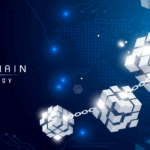In a world increasingly driven by data and distrust, the idea of a borderless, tamper-proof, and transparent ledger sounds like a utopian dream. But that’s exactly what blockchain technology promises—and in many ways, is already beginning to deliver. As global finance becomes more interconnected yet fragmented by differing regulations, infrastructures, and intermediaries, blockchain offers a …
Ledgers Without Borders: Can Blockchain Unify the Global Economy?

In a world increasingly driven by data and distrust, the idea of a borderless, tamper-proof, and transparent ledger sounds like a utopian dream. But that’s exactly what blockchain technology promises—and in many ways, is already beginning to deliver.
As global finance becomes more interconnected yet fragmented by differing regulations, infrastructures, and intermediaries, blockchain offers a compelling solution: a universal infrastructure that transcends borders, middlemen, and inefficiencies. But can this technology truly unify the global economy?
Let’s dive into the vision, the challenges, and the real-world implications of a borderless blockchain-powered financial future.
🌍 A Global Economy, Still Divided
Despite globalization, the global economy still operates through islands of trust—national banking systems, regional clearing houses, and cross-border intermediaries. International remittances can take days, burdened by fees and complex conversions. Supply chains span continents but lack real-time traceability. Millions of people in developing nations remain unbanked, cut off from the digital economy.
This fragmentation isn’t just inefficient—it’s expensive and exclusionary.
Blockchain proposes a radical fix: one decentralized system of truth where transactions, identities, and assets can move freely, securely, and transparently, regardless of location or currency.
🔗 Blockchain’s Superpower: Trust Without Borders
At its core, blockchain is a distributed ledger—a database spread across multiple nodes that records transactions immutably and transparently. No single entity controls it, and once a record is added, it can’t be altered without consensus.
Here’s why this matters for the global economy:
- Borderless Transactions: Cryptocurrencies like Bitcoin or stablecoins like USDC can be transferred globally in seconds, bypassing traditional banking rails.
- Decentralized Identity: Digital identities on blockchain can be universally verifiable, enabling access to financial and social services across borders.
- Smart Contracts: Agreements coded into blockchains can automate payments and compliance globally, reducing legal and logistical friction.
- Tokenization: Assets—real estate, stocks, art—can be represented digitally and traded across global markets 24/7.
Together, these tools create a framework for economic collaboration without central authority or national gatekeepers.
🌐 Real-World Examples of Blockchain Bridging Borders
Blockchain’s potential to unify the global economy isn’t just theoretical—it’s already underway:
📦 Global Supply Chains
Companies like IBM and Maersk have deployed blockchain to track goods across international shipping routes, providing end-to-end transparency and reducing disputes and fraud.
💸 Cross-Border Payments
Ripple and Stellar are enabling fast, low-cost remittances between countries like Mexico, the Philippines, and Nigeria, helping migrant workers send money home more efficiently than through traditional banks or Western Union.
🪙 Central Bank Digital Currencies (CBDCs)
Over 100 countries are exploring or piloting CBDCs. When interoperable, these could enable near-instant global currency exchange with transparency and reduced costs—ideal for trade and remittances.
🧾 Decentralized Finance (DeFi)
DeFi platforms allow users to lend, borrow, and trade assets globally, without a central intermediary. Anyone with a crypto wallet and internet connection can participate—opening up capital access across borders.
🚧 What’s Standing in the Way?
Despite its promise, blockchain faces significant hurdles in becoming the global economic backbone:
🔐 Regulatory Uncertainty
Every country treats crypto and blockchain differently. Some embrace it; others ban it. Without harmonized global regulation, scaling blockchain-based systems internationally remains difficult.
🧭 Lack of Interoperability
Many blockchains are still siloed. Cross-chain communication and standards are improving but aren’t yet seamless. For blockchain to unify the economy, it must unify itself.
🧑💻 User Accessibility
Blockchain still suffers from a steep learning curve. Wallets, keys, gas fees—these concepts remain daunting for the average person, especially in emerging markets.
🔌 Infrastructure & Internet Access
A large portion of the world still lacks reliable internet or smartphone access. Blockchain can’t be inclusive if the basic tech infrastructure isn’t in place.
🌱 The Seeds of a Borderless Financial Future
Despite these challenges, the shift is undeniable. Blockchain is already transforming how we think about value, trust, and ownership.
Here’s how it could play out in the next decade:
- Universal Digital Identity: Citizens anywhere could prove their credentials, vote, or open a bank account without paper documentation.
- Global Stablecoin Networks: Pegged to real-world currencies, stablecoins could become the digital cash of the internet, used from Kenya to California.
- Blockchain-Powered Trade Platforms: Smart contracts could execute cross-border trade deals instantly, with automatic compliance and auditability.
- Decentralized Autonomous Organizations (DAOs): These could allow for global collaboration and investment, with no central headquarters or borders.
In this world, your location or passport wouldn’t define your access to financial services—your digital presence would.
🧠 Why It Matters More Than Ever
As geopolitical tensions rise, currencies fluctuate, and institutions face trust erosion, a neutral, transparent, and programmable infrastructure becomes increasingly essential. Blockchain isn’t just about crypto or digital money—it’s about building trust in a trustless world.
The potential of blockchain to unify the global economy lies not in replacing governments or banks, but in enhancing collaboration, reducing friction, and unlocking access.
💬 Final Thoughts: A Global Ledger for a Global Era
“Ledgers Without Borders” isn’t just a catchy phrase—it encapsulates a vision of economic inclusion, fairness, and efficiency. Blockchain may not be the silver bullet, but it’s a foundational layer for a new kind of global economy—one where code governs trust, and borders don’t restrict opportunity.
As adoption grows and innovation accelerates, the invisible rails of blockchain may very well become the backbone of a truly unified digital economy.







